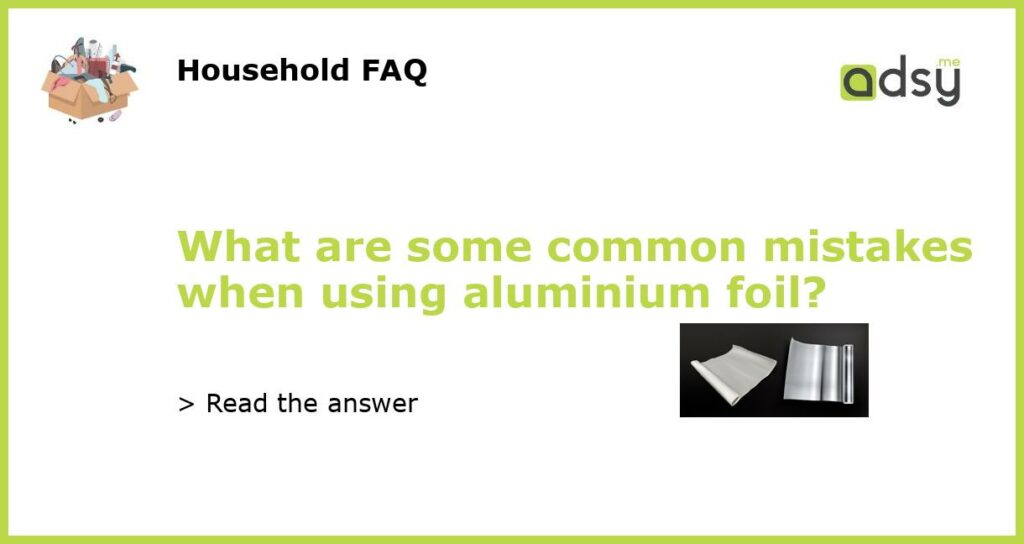Not knowing which side to use
One of the most common mistakes people make when using aluminium foil is not knowing which side to use. The shiny side of the foil is actually the side that should face outwards, while the dull side should face inward. The shiny side is more reflective and can help to reflect heat away from the food being wrapped, while the dull side is better at absorbing heat and can help to keep food warm. Many people assume that the shiny side should be facing inward, but this is not the case.
Scrunching up the foil
Another mistake people often make when using aluminium foil is scrunching it up tightly around the food. This can actually reduce the effectiveness of the foil as a heat insulator, as it creates pockets of air that can allow heat to escape. Instead, try to wrap the foil smoothly and tightly around the food, with as few gaps as possible. This will help to keep food warm and prevent it from drying out.
Using acidic or salty foods
Aluminium foil is not always the best choice of wrapping for acidic or salty foods. This is because the acid and salt can react with the foil, causing it to break down and potentially leach into the food. To avoid this, consider using another type of packaging, such as a glass or ceramic container, or opt for a special type of foil that is designed to withstand acidic or salty foods.
Using foil in the microwave
Another mistake that people sometimes make is using foil in the microwave. While aluminium foil is a great heat insulator, it is not suitable for use in the microwave. This is because the high levels of energy generated in the microwave can cause the foil to spark and potentially start a fire. Instead, use microwave-safe packaging, such as glass or ceramic containers, or opt for microwave-safe plastic wrap.
Using the wrong type of foil
Lastly, it’s important to make sure you’re using the right type of aluminium foil for the job. There are many different types of foil available, including standard household foil, heavy-duty foil, and non-stick foil. If you’re wrapping something that is likely to stick, such as a cheesy casserole or a piece of fish, non-stick foil can be a great option. If you’re cooking something on the barbecue, heavy-duty foil can help to keep food protected from the heat. Make sure you’re using the right type of foil for the job to ensure that your food comes out perfectly every time.




![QBL® [ Pack of 2 ] Premium Quality Aluminium Kitchen Catering Tin Foil Roll 300mm x 12m [12'] for Restaurants Keep Food Fresh & Hot Long Time,*Packaging May Vary*](https://m.media-amazon.com/images/I/41ueGk2jjyL.jpg)

